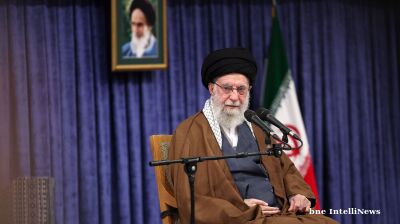Iranians have descended on Tehran’s Ferdowsi Street unofficial foreign currency trading zone in the past couple of days as local media reported incidences of the strengthening Iranian rial (IRR) jumping through the IRR100,000 to the USD threshold, rising to around IRR98,000 on the free market.
Iranians, who often play the foreign currency market for profit, were snapping up trades following a remarkable recovery since September when, as anxiety spread about the tightening of US sanctions undermining Iran’s economy the rial was plummeting towards IRR200,000 to the dollar.
By the market close on December 13, bonbast.com reported that a dollar was selling at IRR107,500 meaning the rial remained around 60% weaker than where it stood at the end of last year, but the currency has nevertheless undergone a remarkable turnaround in recent months, especially given that Washington hit Iran with its heaviest sanctions package yet on November 5.
Baffled
Many local experts remain baffled as to the precise reasons why the IRR has gained to such a degree, but there is no doubt that the Central Bank of Iran (CBI)—the governor of which, Abdolnaser Hemmati, at the end of last week was quoted by state news agency IRNA as saying the regulator would do everything in its power to obey an order from Supreme Leader Ayatollah Ali Khamenei to strengthen the rial—has been intervening by ploughing dollars into the market, while officials have waged an intimidating campaign against market speculators that has even led to the handing down of some death sentences in special courts that deal with profit gougers.
The all-time weak rial rates experienced before the recovery helped drive annual inflation to nearly 40% by November and the economy is now mired in recession. The battle will now be to stop the recession deepening to unbearable depths, restrain inflation and reduce capital flight from Iran. That could partly be achieved through government efforts to support the value of the rial.
“Because of the stronger rial, initial fears among many about the sanctions have eased somewhat, and fewer people are trying to buy dollars,” Reuters quoted a Tehran-based economist as saying on December 13.
Iranian businessmen and economists contacted by the news agency determined that Iran’s central bank was now supplying large amounts of dollars to the market, not only inside Iran but in foreign locations where the currency is traded, particularly Iraq and Dubai.
Part of depreciation “deliberate”
Mehrdad Emadi, an Iranian economist who heads energy risk analysis at London’s Betamatrix consultancy, was cited by Reuters as saying Tehran had deliberately allowed at least part of the rial’s depreciation to occur earlier this year in order to meet its financial needs.
Authorities, he said, were able to sell dollars earned from oil exports at ultra-expensive rial rates near IRR190,000, raising cash to recapitalise state-linked banks and pension funds. Now that the exercise had been completed, they were apparently moving the rial back to levels they considered more comfortable.
In March, the International Monetary Fund estimated Iran was running a current account surplus and had over $100bn of gross official reserves. Such numbers indicate Tehran might have enough reserves to defend the rial comfortably. But the IMF also noted that Tehran was having difficulty accessing some of its reserves as its relations with foreign banks were constrained by the threat of US sanctions. Meanwhile, sanctions could cut the current account surplus sharply given the severe disruption they are causing to trade.
News
Category 5 hurricane Melissa bears down on Jamaica with Haiti and Cuba in storm's path
A catastrophic Category 5 hurricane was bearing down on Jamaica on Monday, October 27 afternoon with sustained winds of up to 282kph (175mph), threatening to become the strongest storm the Caribbean island has ever experienced.
.jpg)
US senator tells Maduro "head to Russia or China" as warships close in on Venezuela
A senior US Republican senator has warned that Venezuelan President Nicolás Maduro's time in power is running out and suggested he leave the country, as military tensions in the Caribbean continue to escalate.

Milei celebrates resounding victory in Argentina's midterm elections
Argentine President Javier Milei scored a major win for his La Libertad Avanza (LLA) party in Argentina's October 26 midterm legislative elections, as the party obtained approximately 40.84% of the nationwide vote with 99.14% of the votes counted.

Zelenskiy accuses China of aiding Russia’s war effort through industrial and military support
Ukrainian President Volodymyr Zelenskiy accused China of materially supporting Russia’s military-industrial complex, providing key technologies and resources that have enabled Moscow to sustain and scale its war effort against Ukraine.

_Cropped.jpg)


